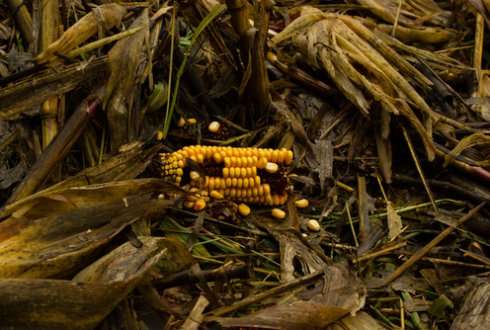Use of residues from agriculture and forestry as energy sources improves food security

The sustainability of growing crops for use as energy sources has been disputed for many years. A potentially attractive alternative is to use waste and residues from agricultural and forestry. However, using waste and other residues may have an impact on land use, biodiversity and food security. The additional sources of income from the sale of waste and other residues could prompt an increase in the production of crops and wood. LEI has investigated the potential impact of the large-scale use of waste from agriculture and forestry on land use and food security.
The use of crops as energy sources can have indirect land use change impacts (ILUC), generating greenhouse gas emissions and affecting biodiversity. The extra demand for crops can spark an increase in food prices and lead to a deterioration in food security. In light of this, this year the European Commission decided to limit the proportion of biofuels produced from agricultural crops to 7% of the total use of transport fuels within the framework of Directive 2009/28/EC on the promotion of the use of energy from renewable sources.
Use of waste and residues as an alternative to crops
An attractive alternative is the use of waste and other residues from agriculture and forestry, such as straw, peels, husks and fruit stones. Various studies have demonstrated this alternative to possess sufficient potential for sustainable energy production that it could cover a considerable amount of the future demand for biomass for energy production. These studies factored in theoretical, technical and economic factors that limit the potential of residues. They also considered the future demand for waste and residues for other applications, such as paper production and animal feed. The studies also demonstrated that part of the residues from agriculture must not be removed from the field in order to maintain the soil's fertility.
Impact on land use, biodiversity and food security
It is important to be aware that the use of waste and residues from agriculture and forestry might have an impact on land use, biodiversity and food security. For instance, the use of straw from wheat boosts the profitability of wheat production. The extra income resulting from the sale of straw therefore prompts an increase in the production of wheat.
Use of residues from agriculture results in lower ILUC impact and improved food security
Using the MAGNET computable general equilibrium (CGE) models, LEI calculated how the large-scale use of crop residues from agriculture as energy sources affect land use and food security in 2030. This revealed that the use of residues from agriculture leads to a decrease in the price of crops and an increase in production and consumption. These effects are most notable in agricultural sectors and regions with high residue potential, such as maize production in North America and palm oil production in Southeast Asia and Indonesia. Exports of crops and processed food from these regions are increasing. This development has triggered a decrease in price and an increase in consumption in other parts of the world. The increase in crop production is linked to higher yields per hectare and an expansion of the area of agricultural land. The expansion of the area of agricultural land has been detrimental to grasslands and resulted in minor losses in natural vegetation. The effects of the changes in land use, which also generate greenhouse gas emissions and affect biodiversity, are limited.
Implications for policy
The use of waste and residues from agriculture and forestry as energy sources will bring about changes in land use and therefore changes in greenhouse gas emissions. The use of waste and residues also affects food security. However, the calculation methods used to determine the impact of the use of waste and residues from agriculture and forestry are not entirely reliable. More attention should be paid to the impact on specific crops, the region and food security for various groups of consumers and producers.
Provided by Wageningen University


















